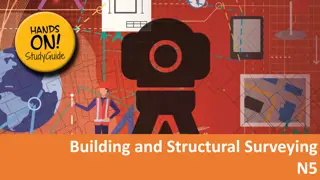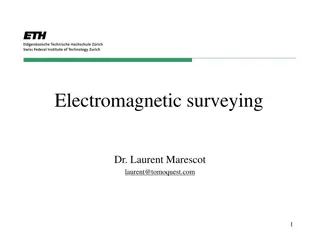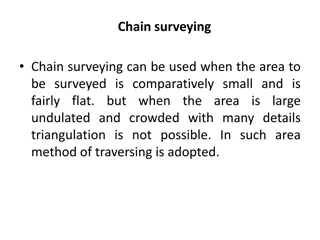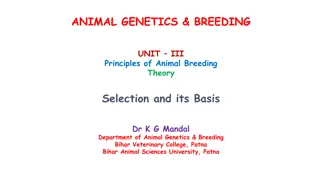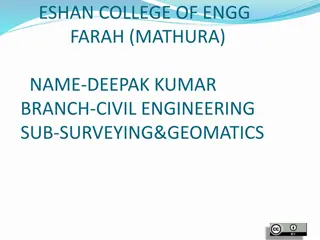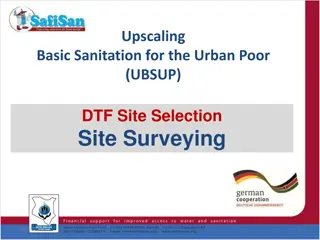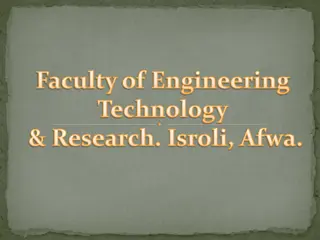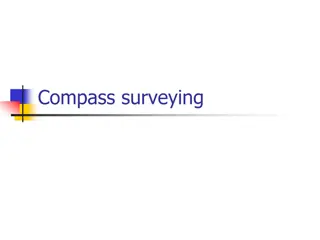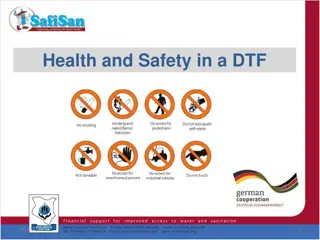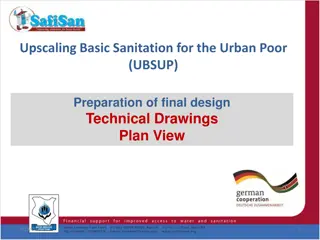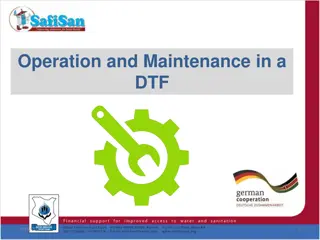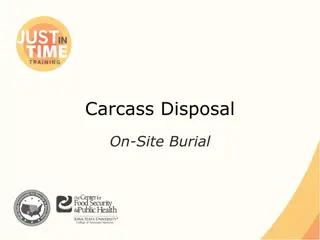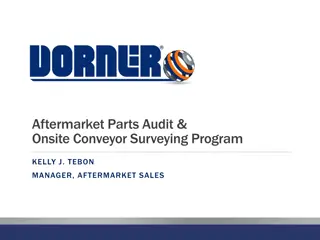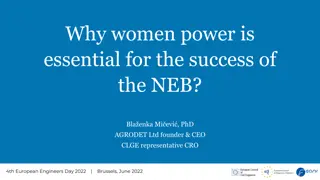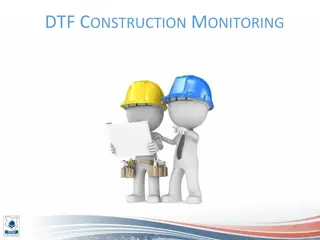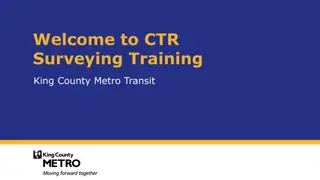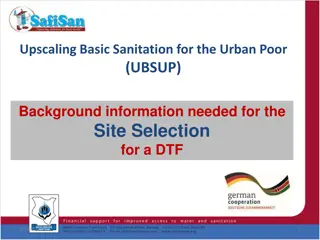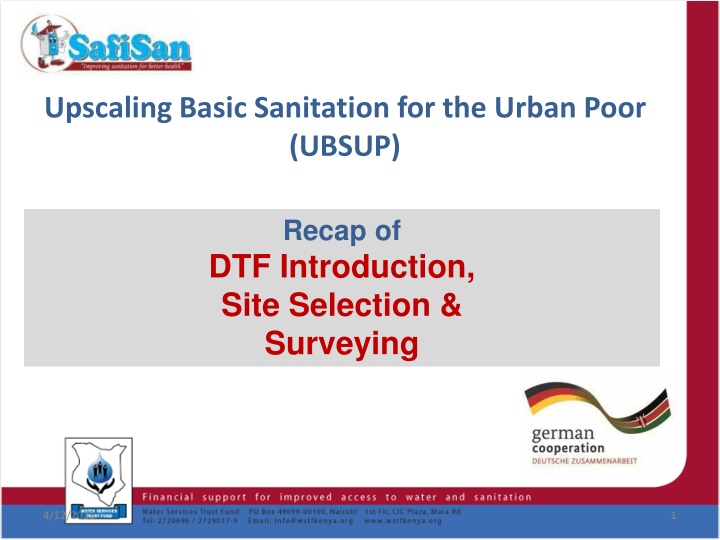
Sustainable Urban Sanitation Workshop Recap
Dive into the highlights of the Upscaling Basic Sanitation for the Urban Poor workshop, featuring insights on the SafiSan Toolkit, DTF introduction, site selection, and more. Explore the context, necessity of decentralized treatment facilities, and practical considerations for effective site selection in urban low-income areas.
Download Presentation

Please find below an Image/Link to download the presentation.
The content on the website is provided AS IS for your information and personal use only. It may not be sold, licensed, or shared on other websites without obtaining consent from the author. If you encounter any issues during the download, it is possible that the publisher has removed the file from their server.
You are allowed to download the files provided on this website for personal or commercial use, subject to the condition that they are used lawfully. All files are the property of their respective owners.
The content on the website is provided AS IS for your information and personal use only. It may not be sold, licensed, or shared on other websites without obtaining consent from the author.
E N D
Presentation Transcript
Upscaling Basic Sanitation for the Urban Poor (UBSUP) Recap of DTF Introduction, Site Selection & Surveying 4/12/2025 1
What is the overall context of this workshop The SafiSan Toolkit Days 1 3 (Adaptation) Day 4 Days 1 3 (Used for construction) Training already provided (Day 1: Recap) (Used for construction) 4/12/2025 3
What is the overall context of this workshop The SafiSan Toolkit Manual already provided (+ various tools like DTF intro, site selection, decision matrix, templates for surveys, etc.) Manual will be provided within the course of this training workshop (+ various tools like AutoCAD drawings, BoQ in Excel, templates for contracting, supervision & monitoring 4/12/2025 4
Content Questions you might to ask yourself: What is the context of this session? Why do we need a DTF? What is treated ... and why decentralised? Where do we need a DTF? How does a DTF work? What needs to be considered during site selection? Is there any support in selecting a site? 4/12/2025 5
What is the context of this session? The SafiSan Toolkit Training will be provided in this week Training to be provided Training already provided (this session: Recap) 4/12/2025 6
What is the context of this session? The SafiSan Toolkit All information can be found in your Design Adaptation Manual Architectural and structural drawings as well as BoQ can be found on the WSTF website: SafiSan Toolkit Module 6 4/12/2025 7
Why do we need a DTF? Close the sanitation value chain Provide access to adequate sanitation for residents of Urban Low Income Areas (LIAs) Reduce environmental pollution Prevent public health hazards 4/12/2025 8
What is treated? Various waste streams to be treated (or not): 4/12/2025 9
Where do we need a DTF? Typical area of application for a DTF: 4/12/2025 10
How does a DTF work: in general? A DTF project follows several transport, treatment and reuse lines: generation & pre-treatment transport to the DTF treatment in a DTF reuse 4/12/2025 11
How does a DTF work? A DTF consists of various parallel and sequenced treatment lines: 4/12/2025 12
How does a DTF work? RB/BT: Receiving Bay & Balancing Tank - mechanical preliminary treatment ST: Settler - mechanical primary treatment ABR: Anaerobic Baffled Reactor - anaerobic secondary treatment VFCW: Vertical Flow Constructed Wetland - aerobic tertiary treatment SDRB: Sludge Drying Reed Bed - parallel treatment of ST/ABR sludge CA: Co-composting Area - parallel treatment of UDDT matter, organic waste (and dried sludge) 4/12/2025 13
How does a RB/BT work? Unload exhausters (2 at same time possible) Screening of FS/WW to remove solid waste Regulated discharge to the settler Overflow to settler 4/12/2025 14
How does a ST work? Mechanical treatment Sedimentation and floatation of (mainly) inorganic solids Scum removed from the surface Sludge removed from the bottom Treatment efficiency 25% - 40% removal of organic pollution Pathogens and nutrients barely removed 4/12/2025 15
How does a ABR work? 6 chambers in sequence Vertical pipes direct FS/WW from top to bottom FS/WW passes through sludge whereby it is mixed with bacteria that decompose pollutants Settled sludge is removed in regular intervals; some sludge must be left for continuous efficiency Efficiency increases with higher organic load (65% - 95% BOD removal); pathogen reduction is 40-75% 4/12/2025 16
How does a VFCW work? Pre-treated FS/WW dosed intermittently on filter planted with reed Roots grow into the filter media, bringing oxygen to the root zone During a flush phase, water percolates down and is filtered by gravel Nutrients and organic material are absorbed and degraded by bacteria attached to gravel and roots Pathogens removed by natural die-off, predation by higher organisms, and sedimentation A drainage network at the base collects the effluent 4/12/2025 17
How does a SDRB work? Filled with gravel to support the vegetation Sludge applied to surface and filtrate collected in drain Fresh sludge applied directly onto the previous layer (roots maintain the porosity of the filter media) Various compartments charged alternating to allow for drying Decreases sludge volume to 50% through decomposition and drying Ideally coupled with co-composting area 4/12/2025 18
How does a CA work? Dewatered sludge/UDDT matter mixed with organic waste 1:2-1:3 Mixed material piled into long heaps (windrows) and left to decompose for approx. 3 months Windrows turned periodically to provide oxygen and ensure that all parts of the pile are subjected to the same heat treatment Piles insulated with compost/soil to ensure even heat distribution Careful planning and design required to avoid failure 4/12/2025 19
How does a DTF look like? 4/12/2025 20
How does a DTF look like? 4/12/2025 21
How does a DTF look like? 4/12/2025 22
Who is responsible for site selection? The site is selected by your DTF Technical Team In collaboration with relevant stakeholders: County Official County Resident Monitor (CRM) NEMA and WRMA PHO Chiefs, elders and residents Supportedby staff and Flying Squad of the WSTF (on request) 4/12/2025 23
What needs to be considered? 4/12/2025 24
Will the DTF serve the target group? DTFs primarily serve inhabitants of LIA Higher income area can also benefit as long as focus is on LIA 4/12/2025 25
Is the DTF required to treat excreta? Investment and O&M costs only pay off if a minimum quantity of FS / UDDT matter is treated WSP exhausters or private exhausters must discharge into the DTF, otherwise no FS treatment required (approx. 22m3/d) SaniGo or other means of transport must discharge into the DTF, otherwise no CA required (approx. 250 UDDT) Future demand needs to be assessed together with the County to ensure that demand does not decrease 4/12/2025 26
Will the DTF products being used? Clarify whether the treated effluent, dried sludge and compost is deposited / reused ( close the sanitation value chain) If no reuse feasible, a more beneficial site should be considered Even without reuse, site might be okay as main objective is to improve public health 4/12/2025 27
Is land available? Assure proper land is available for construction and operations Written permission by County, or In case of private land, title deed in the name of your company Required stakeholder must be involved during site selection and verification Required approvals must be obtained in time 4/12/2025 28
Is space available? All required DTF modules must fit on the grounds Different modules must be arranged in an operational manner Length [m] 6 8 11 11 19 10 Width [m] 9 4 4 30 11 8 DTF module Footprint [m2] Receiving Bay / Balancing Tank (RB/BT) Settler (ST) Anaerobic Baffled Reactor (ABR) / BT Vertical Flow Constructed Wetland (VFCW) Sludge Drying Reed Bed (SDRB) Co-composting Area (CA) 54 32 44 330 209 80 + Space for an operator/storage building, (bypass) piping, inspection boxes, manoeuvring exhauster Total footprint about 1,000-1,500 m2; if only a CA is required, space requirement is 160 m2. 4/12/2025 29
How can the DTF being reached? DTF becomes uneconomic and useless if not accessible: Distance for exhausters max. ~10km Distance SaniGo or other transport means max. ~ 5km Accessible by road Slope appropriate for exhausters and manual means of transport 4/12/2025 30
Which role play slope and levels? DTF module ST ABR Siphon/BT Difference [m] 0.10 0.15 0.85 Remark Between inlet and outlet pipe Between inlet and outlet pipe Between ABR outlet and outlet of BT attached to ABR (for intermittent loading of VFCW) Between feeding and drainage pipe VFCW Within treatment modules: 1.80m 0.70 Within network: ~ 0.7m based on 1% slope (for 6m between modules, 50m to river) Total level difference: ~ 2.5m (equivalent ~ 2% slope) Required level differences reduce with distance between modules Levels of all treatment modules depend on level of final effluent discharge point (e.g. flooding level of river) Receiving Bay h River 4/12/2025 31
What is the final effluent discharge point? Discharge points refers to effluent of VFCW Nearby River (flooding level) - preferred Existing drainage channel / trench Should be max. 100m from VFCW outlet Inspection chambers to be placed every 20-25m for cleaning 4/12/2025 32
Which role plays solid waste? Well sorted organic waste is required for co-composting: Bio-waste to be mixed 2:1 - 3:1 with UDDT matter in the CA Collected from LIA or markets Transported by SaniGo or existing solid waste collectors 4/12/2025 33
Which role play soil conditions? Soil conditions play a role during construction and related costing Excavation; i.e. Settler (ST) and Anaerobic Baffled Reactor (ABR) Soft soil hard rock Assessment required to establish costs in BoQ / tender evaluation 4/12/2025 34
Who will build the DTF? Your WSP needs to outsource construction to a contractor Construction quality is crucial to guarantee proper operations Reliable and capable contractor required Trained artisans, technically qualified staff Required equipment (e.g. concrete mixer, form works, dumpy level) Proven experience in comparable projects References and reputation Rigorous/permanent supervision by WSP isrequired 4/12/2025 35
Is the DTF affordable? Affordable: Revenues > Expenses: Expenses: O&M cost: operator, preventative / corrective maintenance, repairs Incentive for Sanitation Teams to dispose of UDDT matter Revenues: Cost saving for unloading WSP exhausters Fee charged from private exhauster services ( law enforcement) Tariff increase approved by WASREB for improved service delivery Sales of compost and soil conditioner 4/12/2025 36
Is there any support in selecting a site? Decision matrix... Is a site generally feasible Which treatment trains are required Tool for baseline data collection and field survey Stakeholder analysis to explain roles and responsibilities of relevant actors Workflow chart to showcase which steps need to be taken and which stakeholder are to be involved at what point 4/12/2025 37
Decision matrix Two questionnaires support to find out: Matrix 1: Is a site generally suitable? Matrix 2: Which treatment trains are required: Treatment of UDDT dried matter (approx. 250 UDDTs) Treatment of FS (approx. 22m3/d) 4/12/2025 38
How is matrix 1 filled out? Colum No: Reference number of guiding question Column Guiding Question: Questions referring to considerations Column Yes / No / I don t know / N/A: Fill in answer on guiding question Column Comments: Add any clarification you think is required Columns 4-6 are filled by WSTF staff not by WSP 4/12/2025 39
How is matrix 2 filled out? Colum No: Reference number of guiding question Column Guiding Question: Questions referring to considerations Column Yes / No / I don t know: Fill in answer on guiding question Column Comments: Add any clarification you think is required Grey colored cells are not to be answered Columns 5-7 are filled by WSTF staff not by WSP 4/12/2025 40
Baseline data collection - Boundaries Mark corners (e.g. with metal rods) Take preferably GPS coordinates of cornerstones Note distances on the layout drawing Ensure sufficient distance (riparian) to water bodies as per NEMA 4/12/2025 41
Baseline data collection - Raster levelling Define a fix and suitable benchmark Mark location of BM on layout drawing and permanently at site Take levels according to a fix raster (20-30 points) Note levels at provided template Reference Point B.M. A1 A2 A3 ... ... Level (m) 0.000 4/12/2025 42
Baseline data collection - Arrangement Draw modules on a new layout plan Consider space for manoeuvring of exhauster trucks Ensure proper arrangement of pipes, bypass pipes and inspection boxes Consider slopes / topography 4/12/2025 43
Baseline data collection - Levelling Take levels at the following locations Level of the final effluent discharge point (flooding level) Ground levels where RB, treatment modules and gate will be located Note levels in table template Reference Point B.M. Outlet VFCW CA ABR ... Level (m) 0.000 4/12/2025 44
Baseline data collection - Distances Take distances between the treatment modules that are arranged in series: VFCW outlet to final discharge point Outlet of ABR-BT to VFCW ST outlet to ABR inlet Outlet of RB/BT to ST inlet Note distances on layout plan and in table Reference A B C D Distance (m) 4/12/2025 45
Baseline data collection - Soil conditions Establish soil conditions at all locations where excavation is required Particularly for ST and ABR (underground) Note levels in table template Reference Point RB/BT ST ABR VFCW SDRB CA House Soil conditions 4/12/2025 46
Workflow & stakeholders 4/12/2025 47
What are the results of your site selection? Next session: Presentation and discussion of DTF concepts and sites Short summary/presentation of both decision matrices Site layouts incl. entrance and discharge point, arrangement of modules, distances and level differences between relevant spots Expected problems Waste collection and reuse concept 4/12/2025 48
Do you have any questions, remarks or suggestions? 4/12/2025 49

